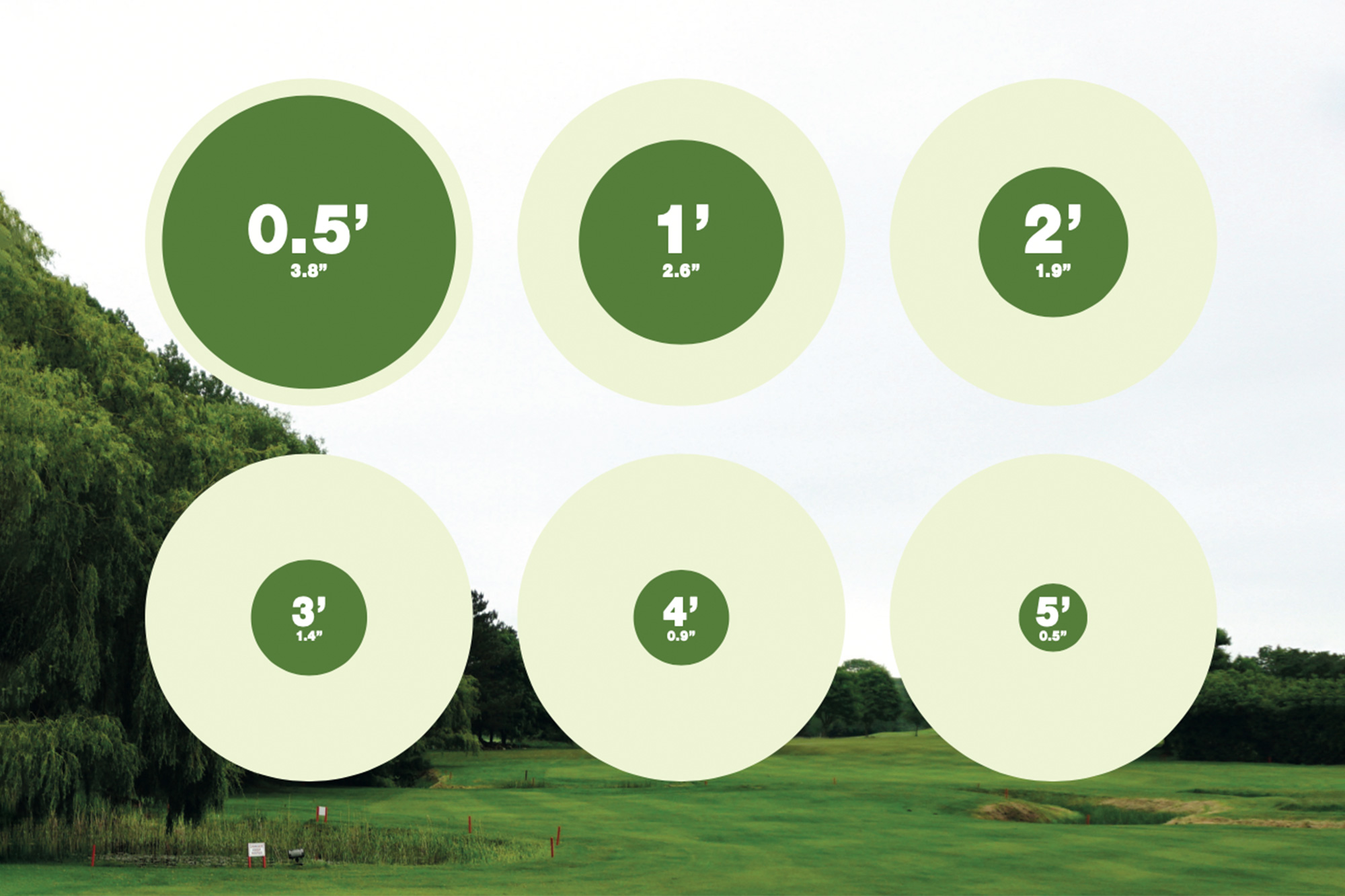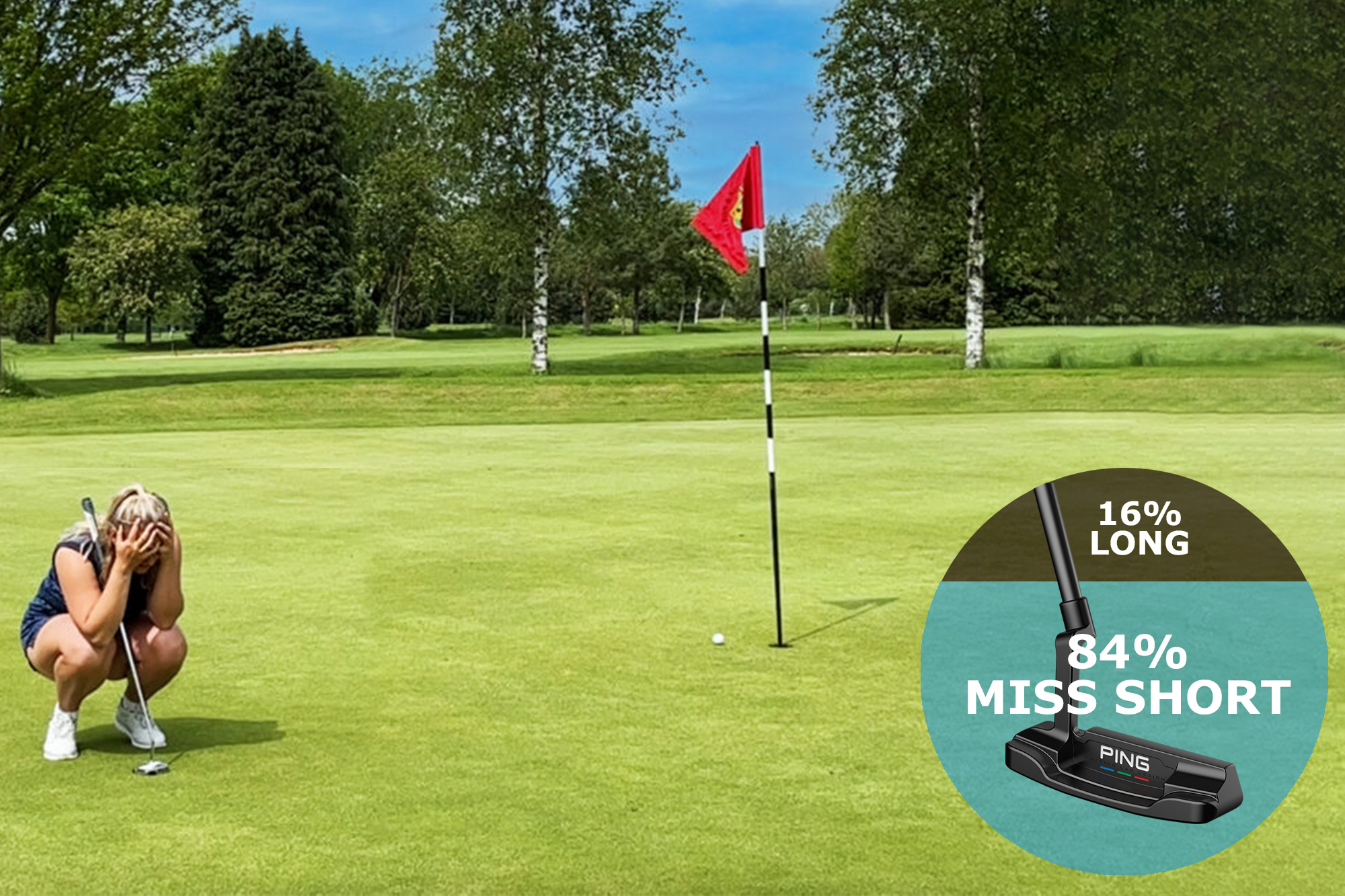We’ve all heard the phrase “never up, never in”, but have you really considered how many shots you are leaving out on the course by not getting your putts to the hole?
A putt that doesn’t reach the hole has zero chance of going in. Shot Scope’s database of more than 170 million shots has revealed that 84% of putts hit from outside 5ft are left short. Incredible.
Whilst leaving a long-range putt short isn’t necessarily an issue, from 15ft and in you really should be giving your putts a chance of getting to the hole.
- RELATED: Ultimate Guide to Putting
Golfers often walk off the course discussing how they just didn’t have the speed of the greens. Pace putting is one of the main skills when it comes to being on the greens. It can often make or break a scorecard. Improving your speed control on the putting green can reduce the chance of those dreaded three putts.
A scratch golfer single putts 31% of the time, and two putts 61% of the time. They are gaining shots on the field by having very few three-putts. For the majority of golfers, working on your distance control and reducing three-putts would help their putting more than having a few more single putts.
And for a 15-handicap golfer the average length of putt holes is only 4 feet. That means, as a mid-handicapper, if you leave the ball more than 4 feet from the hole, you are more likely to miss than hole the putt.
Suddenly ramming your putt 6 feet past to give your first putt ‘a look’ doesn’t seem like such a good idea, does it?
Pace Putting: The Key Points
Why do player’s leave so many putts short? There are a number of reasons for this, but the main factor is generally how well you strike putts. Even if you have the same length and speed of stroke each time, the ball will travel a different distance if it strikes a different part of the face. Striking the ball out of the toe, heel, or even low on the face will affect the ball.
Advertisement
For others though it just comes down to confidence. If you are worried about making an error, or three-putting, it is easy to become tense and not commit to the stroke. Telling yourself not to leave it short with the phrase “never up, never in”, is pre setting negative thoughts.
With mid to long putts the goal for most amateur golfers isn’t to hole them. It is often to just get them as close to possible to make the second putt easier. This is lag putting where you’re setting yourself up for a more comfortable distance for the second putt. This increases the chance of a two putt. However, good distance control when putting doesn’t mean that you consistently leave the ball way short of the hole. Putts left too short can leave just as much work for a players as one that is past the hole.
Understanding green speeds is also an important part of pace control. Greens are measured using a stimpmeter. This might be displayed around the first tee to inform players of the green speed on the course for that day. This is something to pay attention to before you tee off.
The speed of your putt can determine the break. If you see that the green has a right to left slope. How far outside the hole you aim is determined by the speed of the green. If you get the correct pace and line matched up the golf ball should go into the hole.
How Far Past the Hole is Good When Pace Putting?
Dave Pelz was one of the first to do research in this area. The putting guru’s research says you should aim to finish the ball no further than 18 inches past the hole. However, further research suggests this may be too far past. But why?
Advertisement
A golf hole is 4.25 inches in diameter. So, for the ball to drop into the cup it needs to be travelling over it for 0.66 seconds for gravity to pull it in. The effective size of the hole changes relative to the speed of a putt.

The diagram above shows research data from Aimpoint. A putt that finishes half a foot behind the hole gives you 3.8 inches of the cup where the putt can drop in. Compare that to a ball that travels 2ft past the hole and the area of the cup where the putt will drop more than halves.
If you want to improve your putting, you need to need to be getting the ball to be rolling as slowly as possible when it hits the hole. This in effect, makes the hole as big as possible, making the ball more likely to drop in. It also means you should have an easy tap-in and not have to worry about the putt coming back.
Putting Drills: How to Practice Pace Putting?
Blu Tack Strike Drill
Strike is a fundamental part of pace control. It is important to be able to consistently repeat a centre strike. A cheap and effective way to do this is to add Blu Tack around the sweet spot of the putter face. Then, if you miss the centre, the ball will come off dead. This is a great way of getting instant feedback as you will know if you’ve missed the middle.
Once you have improved your strike, an easy way to work on speed control is to hit putts while looking at the hole. Jordan Spieth is a big advocate for this and has even been know to do this in tournament play.
Advertisement
Ladder/Box Drill
This is a great drill for pace as it gives you a visual aid. The ladder drill involves a handful of tees and will help you to improve your putting. The first thing you do is make a semicircle of tees around the back of the hole, a grip length away from the hole.
You then place a tee a few feet away, then another tee a few feet past and so on depending on how far you want to go back. The aim of the game is to hole the putt but make sure you don’t go outside of the tees behind the hole.
If you come up short or go past the tees you need to start again. If you hole the putt or finish in between the tees and the hole, you can move onto the next station.
You don’t need to move to the next station on the ladder. If you want you can go from the first to the third or simply whatever range of putting you want to work on the most. The only rule is that to move onto a new station you must either hole the putt, or make sure the ball does not travel past the tees.t leaving any short or long past the tee’s.
Towel Drill
This challenge is very similar to the ladder drill. Using a towel as the target gives a larger target area and removes the focus of the hole. For a lot of players they get caught up on trying to hole putts from mid/long range which can cause poor pace.
3ft-27ft Pace Drill
Did you know that from 3-10 feet, for every inch further away you are, the make rate drops by 0.7%? That’s why it always amazes me when I hear people saying they aim to hit their putts a foot and a half past the hole.
Advertisement
Between two holes, set up tee peg stations with two balls. Start from about three feet and continue at three foot increments. Start with a long putt aiming to get the ball to finish deadweight. Alternate between short and long putts.
Conclusion
The old golfing phrase “never up, never in” is often heard amongst amateur golfers but it’s not necessarily very helpful. Aiming for a target past the hole doesn’t set a player up for good putt as it encourages them to finish past the hole. This can result in a tricky return putt. Equally, finishing too short can leave the same problem.
We’ve created a list of great pace putting tip and drills to help with better pace control. Eliminating those dreaded three putts!
Advertisement
